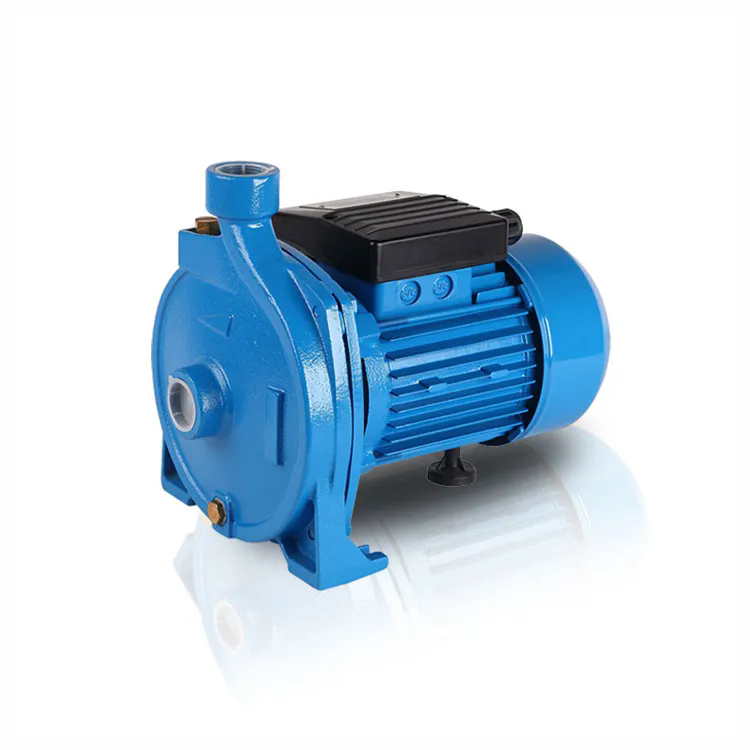Understanding Electrical Centrifugal Pumps: Key Components and Applications
2024-08-09
In industries ranging from agriculture to manufacturing, the movement of fluids is a critical operation that requires reliable, efficient equipment. Among the various types of pumps available, electrical centrifugal pumps stand out for their versatility, efficiency, and ability to handle a wide range of fluids under different conditions. Whether you’re dealing with water, chemicals, or oils, an electrical centrifugal pump is often the go-to solution.
What is an Electrical Centrifugal Pump?
An electrical centrifugal pump is a mechanical device powered by electricity that uses rotational energy to move fluid through a system. The core principle behind its operation is centrifugal force—hence the name. The pump's impeller (a rotating component) spins at high speed, generating kinetic energy that forces the fluid outward from the center of rotation, pushing it through the pump’s discharge outlet.
Centrifugal pumps are classified as dynamic pumps, meaning they impart energy to the fluid continuously, rather than in discrete steps. This allows for a smooth and consistent flow, making these pumps ideal for applications where steady fluid movement is essential.
Key Components of an Electrical Centrifugal Pump
Understanding the key components of an electrical centrifugal pump can help in selecting, operating, and maintaining these devices effectively:
1. Impeller: The impeller is the heart of the pump. It consists of blades or vanes that spin inside the pump housing. As the impeller rotates, it imparts velocity to the fluid, converting mechanical energy into kinetic energy.
2. Pump Casing: The casing, often spiral-shaped, houses the impeller and directs the flow of fluid into and out of the pump. The design of the casing plays a crucial role in the pump's efficiency and performance.
3. Shaft: The shaft connects the impeller to the electric motor, transmitting the rotational energy from the motor to the impeller. The shaft must be strong and precisely aligned to ensure smooth operation.
4. Seal or Gland: This component prevents fluid from leaking out of the pump casing along the shaft. Mechanical seals or gland packings are commonly used, depending on the pump design and application.
5. Electric Motor: The motor provides the necessary power to spin the impeller. The size and type of motor vary depending on the pump's capacity and the application requirements.
6. Inlet and Outlet Ports: These are the points where fluid enters and exits the pump. The design and size of these ports influence the flow rate and pressure generated by the pump.
How Does an Electrical Centrifugal Pump Work?
The operation of an electrical centrifugal pump can be broken down into a few basic steps:
1. Fluid Entry: Fluid enters the pump through the inlet, also known as the suction side. The suction typically occurs at the center of the impeller.
2. Kinetic Energy Transfer: As the impeller rotates, it spins the fluid outward due to centrifugal force. The high-speed rotation imparts kinetic energy to the fluid, increasing its velocity.
3. Pressure Generation: The high-velocity fluid is directed to the outer edges of the impeller and into the pump casing. As the fluid moves from the smaller area at the impeller’s center to the larger area in the casing, its velocity decreases, and its pressure increases.
4. Fluid Discharge: The pressurized fluid is forced out of the pump through the outlet, where it can then be directed through the piping system to its destination.
Common Applications of Electrical Centrifugal Pumps
Due to their efficiency and versatility, electrical centrifugal pumps are used in a wide range of industries and applications:
- Water Supply and Distribution: These pumps are commonly used in municipal water systems to transport water from reservoirs to households and businesses.
- Agriculture: In irrigation systems, centrifugal pumps move water from sources like rivers, lakes, or wells to agricultural fields.
- HVAC Systems: In heating, ventilation, and air conditioning systems, centrifugal pumps circulate water, glycol mixtures, or other fluids to regulate temperature within buildings.
- Industrial Processes: Centrifugal pumps are used to move chemicals, oils, and other fluids through manufacturing processes, ensuring consistent flow and pressure.
- Firefighting: These pumps are integral to fire suppression systems, delivering water at high pressure to extinguish fires.
- Wastewater Treatment: In sewage and wastewater treatment plants, centrifugal pumps transport waste materials through various stages of treatment.
Advantages of Electrical Centrifugal Pumps
There are several reasons why electrical centrifugal pumps are a preferred choice in many applications:
1. Efficiency: Centrifugal pumps are highly efficient at converting energy into fluid movement, especially when operating at their designed capacity.
2. Simple Design: The straightforward design of these pumps means they are easy to operate and maintain, with fewer moving parts that could fail.
3. Versatility: Centrifugal pumps can handle a wide range of fluids, from clean water to slurries and chemicals, making them suitable for diverse applications.
4. Scalability: These pumps come in a variety of sizes and capacities, allowing them to be scaled to meet the specific needs of different systems, from small residential setups to large industrial operations.
5. Continuous Operation: Designed for continuous operation, centrifugal pumps are ideal for applications where a steady, uninterrupted flow of fluid is necessary.
Tips for Selecting the Right Electrical Centrifugal Pump
Choosing the right centrifugal pump for your application involves considering several factors:
- Flow Rate: Determine the required flow rate, typically measured in gallons per minute (GPM) or liters per minute (LPM), to ensure the pump can handle the volume of fluid needed.
- Head Pressure: Calculate the total head pressure, which includes the height the fluid needs to be lifted and any friction losses in the system. This will help in selecting a pump that can generate the necessary pressure.
- Fluid Type: Consider the type of fluid being pumped, including its viscosity, temperature, and chemical properties. This will influence the choice of materials for the pump casing, impeller, and seals.
- Power Supply: Ensure that the pump’s electric motor is compatible with the available power supply, including voltage, phase, and frequency.
- Installation Environment: Take into account the installation environment, including space constraints, accessibility, and exposure to elements like dust, moisture, or corrosive substances.
Conclusion
Electrical centrifugal pumps are indispensable tools across various industries, offering reliable and efficient fluid movement for a wide range of applications. Their simple yet powerful design, combined with their ability to handle different types of fluids, makes them a go-to choice for both standard and specialized pumping needs.
By understanding how these pumps work, their key components, and the factors to consider when selecting one, you can ensure that your fluid-handling system operates smoothly and efficiently. Whether you’re in agriculture, manufacturing, or municipal services, an electrical centrifugal pump can provide the performance and reliability you need to keep your operations flowing.



